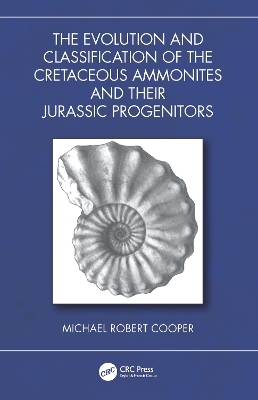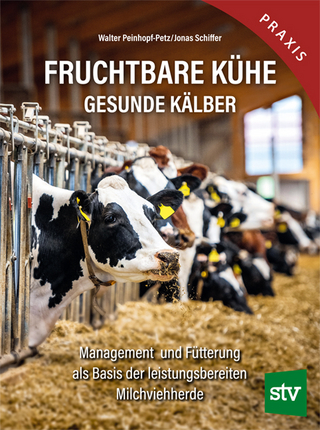
The Evolution and Classification of the Cretaceous Ammonites and their Jurassic Progenitors
CRC Press (Verlag)
978-1-032-76279-1 (ISBN)
- Lieferbar (Termin unbekannt)
- Versandkostenfrei innerhalb Deutschlands
- Auch auf Rechnung
- Verfügbarkeit in der Filiale vor Ort prüfen
- Artikel merken
There is no judgement as to validity, and the authors leaves it to the reader to subjectively recognize or synonymize those taxa as they see fit, based on the premises and philosophies to which they ascribe. The author argues that the taxonomy offered by the Treatise, the fundamental reference work, is no longer appropriate and genera need to be redefined according to testable hypotheses. The purpose of this book, therefore, is redescribe the type species of every nominal genus and to use these to construct a new phylogenetic classification not hampered by preconceived opinion. It emphasizes the importance of "trifling characters" for classification, and that taxonomic rank is not optional but is predetermined by evolutionary position. A new higher classification is introduced for the group using the higher taxa proposed for the phylogenetic classification of the Bivalvia. Hypothesized relationships are depicted by the use of cladograms, recognizing these portray only affiliations among the sample and not necessarily close taxonomic bond.
This book will be of great interest to palaeontologists, geologists, stratigraphers, biogeographers and interested students of geology, and paleology. It will also make a good addition to universities, museums, and public libraries.
Michael Robert Cooper attended the University of Natal where he graduated B.Sc. in 1969 and B.Sc. Hons in 1970. He joined the South African Museum, Cape Town, in 1971 as the invertebrate palaeontologist, his research focusing chiefly on ammonites, but also working on trilobites and trigoniid bivalves.; during this time, he was awarded his M.Sc. He completed his doctoral studies at Oxford University in 1977, and spent a year as a sectional geologist on Shackleton Mine, Zimbabwe-Rhodesia, after which he returned to Oxford in 1978 on a post-doctoral studentship. He went on to become a palaeontologist at the Queen Victoria Museum in Salisbury, Zimbabwe-Rhodesia, where his research focused mainly on dinosaurs, birds and tortoises, and later joined the University of Durban-Westville in South Africa as a temporary junior lecturer in palaeontology and stratigraphy, where his research focused mainly on stratigraphy, ammonites, bivalves (trigoniids, oysters) and brachiopods. He took early retirement in 2002 as an Emeritus Professor but has continued his work on ammonites and trigoniid bivalves. Since then, he has published three books, and authored 140 scientific publications on such varied topics as Cretaceous and Cainozoic stratigraphy, eustasy and tectonic cycles, ammonites, bivalves, trilobites, brachiopods, dinosaurs, birds, living moths and living cycads.
Introduction
1. Phylum Mollusca Linnaeus, 1758
2. Clade Eumollusca Ruppert, Fox & Barnes, 2004
3. Subphylum Conchifera Gegenbaur, 1878
4. Superclass Cyrtosoma Runnegar & Pojeta, 1974
5. Class Cephalopoda Cuvier, 1797
6. Subclass Neocephalopoda Lehmann & Hillmer, 1980
7. Megaorder Ammonita Aggasiz, 1840
8. Superorder Ammonitiformii Zittel, 1884
9. Order Phylloceratida Hyatt, 1900
10. Suborder Phylloceratidina Hyatt, 1900
11. Order Lytoceratida Hyatt, 1900
12. Suborder Lytoceratidina Hyatt, 1889
13. Suborder Tetragonitidina Schindewolf, 1962
14. Order Ammonitida Zittel, 1884
15. Suborder Haploceratidina Besnosov & Mikhailova, 1984
16. Order Perisphinctida Houša, 1965
17. Suborder Perisphinctidina Houša, 1965
18. Suborder Protancyloceratidina Vermeulen, 2005
19. Order Acanthoceratida Hyatt, 1900
20. Suborder Desmoceratidina Ruzhensev, 1962
21. Suborder Placenticeratidina Hyatt, 1900
22. Suborder Acanthoceratidina Hyatt, 1900
23. Hyporder Brancoceratoidei nov
24. Hyporder Acanthoceratoidei Hyatt, 1900
25. Hyporder Collignoniceratoidei nov
26. Order Ancyloceratida Wiedmann, 1962
27. Suborder Ataxioceratidina nov
28. Hyporder Ataxioceratoidei nov
29. Hyporder Polyptychitoidei nov
30. Hyporder Neocomitoidei Salfeld, 1921
31. Hyporder Crioceratitoidei nov
32. Hyporder Pulchellioidei nov
33. Suborder Ancyloceratidina Wiedmann, 1962
34. Hyporder Ancyloceratoidei Wiedmann, 1962
35. Hyporder Douvilleiceratoidei nov
36. Suborder Turrilitidina Besnosov & Mikhailova, 1984
References
List of new genera
Index
| Erscheinungsdatum | 14.11.2024 |
|---|---|
| Zusatzinfo | 775 Halftones, black and white; 775 Illustrations, black and white |
| Verlagsort | London |
| Sprache | englisch |
| Maße | 178 x 254 mm |
| Themenwelt | Naturwissenschaften ► Biologie ► Zoologie |
| Naturwissenschaften ► Geowissenschaften ► Geologie | |
| Naturwissenschaften ► Geowissenschaften ► Mineralogie / Paläontologie | |
| Technik ► Bauwesen | |
| Technik ► Umwelttechnik / Biotechnologie | |
| Weitere Fachgebiete ► Land- / Forstwirtschaft / Fischerei | |
| ISBN-10 | 1-032-76279-9 / 1032762799 |
| ISBN-13 | 978-1-032-76279-1 / 9781032762791 |
| Zustand | Neuware |
| Haben Sie eine Frage zum Produkt? |
aus dem Bereich


